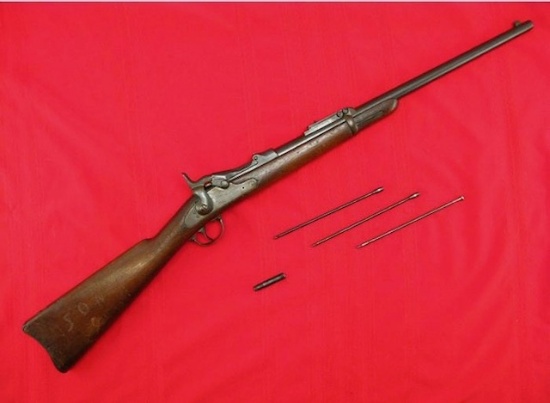

That way the ammo in the magazine was there as a reserve, in case of close-range combat. The magazine cut-off was intended to be engaged during long-range fights, when soldiers were to use the rifle as a single shot and load one round at a time. Many officers still believed in volley fire, also. The Army was just getting used to the idea of repeating rifles and was afraid a bolt action would encourage soldiers to waste ammunition, causing supply problems. Springfield fitted somewhere around 200 1898 rifles and 1899 carbines with the device, though it was never accepted into regular use and is extremely rare to find today. Interestingly enough, the Springfield Krags had a magazine cutoff lever on the left side of the receiver. A rotary lever inside cycled the ammunition. You opened the lid, dropped in five cartridges, and shut it. The Krag-Jørgensen loaded by means of a box, almost a hopper, on the right side of the receiver. It served in the Spanish American War, Philippine Insurrection and the Boxer Rebellion. Produced by the Springfield Armory as the 1892 Springfield, the Krag-Jørgensen was made in several rifle and carbine variants over the next decade. SN 83414 C&R Competitive In-House shipping is available for this lot.

30-40 Krag caliber, used extensively in the Spanish American War, walnut stock with finger groove, sling swivels, leather sling stamped WJD, dated 1918, rear ladder sight, P stamp behind trigger guard, 30' barrel. The Army wanted a bolt action to replace the trapdoor Springfield, and the winner out more than 40 entrants was the Krag-Jørgensen from Norway. US Springfield Armory model 1898 Krag rifle. Army held trials to find a new service rifle.


 0 kommentar(er)
0 kommentar(er)
